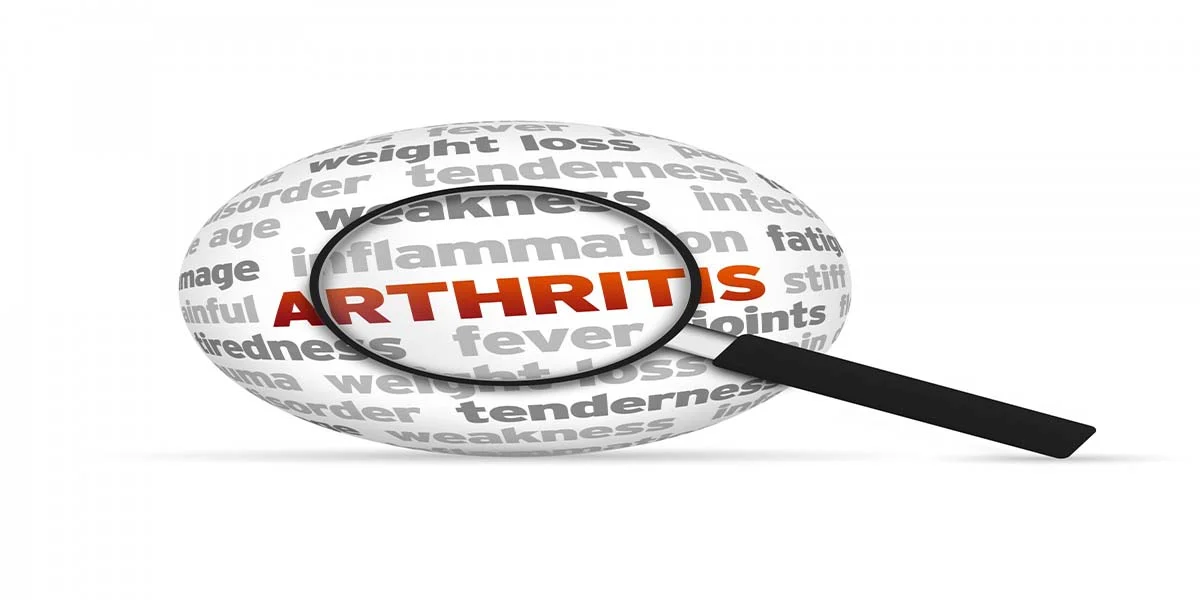MANAGING OSTEOARTHRITIS

Managing Osteoarthritis
Whenever I think of the term “arthritis” it brings back memories of my dear nana. She had terrible arthritis in her hands and knees and I remember thinking there must be a way to ease her discomfort. As a teenager, I can vaguely remember my mother telling her to change her diet but as a lady who loved cake, I knew this would never happen!
In the years to come, when studying Osteopathy, I found myself faced with the term “osteoarthritis” (or in lay terms “arthritis”) a lot. It was then I realised just how many people are affected, with 4% of the global population suffering. (Cross, et al., 2014)
So, what is Osteoarthritis?
Osteoarthritis is a condition where joint surfaces deteriorate causing bone to rub on bone. This causes symptoms such as pain, swelling and stiffness and can be especially bad in the morning. The hands, knees, hips and spine are commonly affected and it doesn’t always affect older people.
In clinic, I have discovered many don’t know about non-drug approaches. Of course you should follow the guidance of your GP, however additional supplements, therapies and exercise can be of help. For that reason (and as respect to my nana) I thought I would share some suggestions.
Supplements that can help
Arthritis UK infer the most effective complementary medicine is capsaicim, rating 5/5 for effectiveness. This derives from chilli peppers and can be found in the form of gel, cream or plasters. Randomised control trials have found that when given against a placebo, those using capsaicim reported a reduction in pain and tenderness. Capsaicim is available on prescription so have a word with your GP if you’re interested in trying this.
Other supplements that have proved effective include green lipped muscle extract*, Indian Frankincense and ginger* which are available from high street retailers.
*may affect anticoagulant medication
For more information see: http://www.arthritisresearchuk...
A note on Paracetamol
The first line of analgesic drug GPs will prescribe is paracetamol. However, there has been considerable controversy into the effectiveness and efficacy of this drug. A recent systematic review and meta - analysis suggests paracetamol is ineffective in reducing pain and disability or improving quality of life in patients with low back pain (Machado, et al., 2014).
Therapies that can help
Osteopathy
Osteopathy can have great benefit in reducing swelling, decreasing pain and increasing joint mobility. A range of techniques can be used including massage, articulation, fascial and functional work, that is tailored to your individual needs. Advice on lifestyle choices and exercise will also be given, so you can help yourself control the symptoms.
The National Council of Osteopathic Research (NCOR) has found there is evidence that supports that manipulative therapy combined with exercise therapy is beneficial for knee osteoarthritis (NCOR, 2015).
Acupuncture
Acupuncture is the insertion of fine needles at certain points in to the skin. It can help by deactivating trigger points, and relieves pain by breaking the pain cycle. Acupuncture is seldom painful, with many only feeling a slight tingling sensation.
What has research found?
A Cochrane review that involved 3,498 participants found:
“Compared to sham treatment, acupuncture was associated with significant, although small improvements in pain and function after eight weeks and in the longer term (26 weeks).
Benefits of acupuncture were also observed when comparing the treatment to waiting list (usual care) control treatment.” (Manheimer, et al., 2010)
A quick note:
Do not use complementary health approaches to postpone seeing your GP about any health problem.
Note that dietary supplements may interact with medications or other supplements so tell your
GP about complementary health approaches you use.
Any questions feel free to email me at: gemma@burevalleyosteopaths.com
Thanks for reading!
Gemma :)
References
arthritisresearchuk.org., 2015. Complementary medicines for osteoarthritis | Arthritis Research UK. [online] Available at: http://www.arthritisresearchuk... [Accessed 9 Sep. 2015]
cochrane.org., 2015. Acupuncture for osteoarthritis | Cochrane. [online] Available at: http://www.cochrane.org/CD0019... [Accessed 9 Sep. 2015].
Cross, M., Smith, E., Hoy, D., Nolte, S., Ackerman, I., Fransen, M., Bridgett, L., Williams, S., Guillemin, F., Hill, C., Laslett, L., Jones, G., Cicuttini, F., Osborne, R., Vos, T., Buchbinder, R., Woolf, A. and March, L., 2014. The global burden of hip and knee osteoarthritis: estimates from the Global Burden of Disease 2010 study. Annals of the Rheumatic Diseases, 73(7), pp.1323-1330.
Machado, G., Maher, C., Ferreira, P., Pinheiro, M., Lin, C., Day, R., McLachlan, A. and Ferreira, M., 2015. Efficacy and safety of paracetamol for spinal pain and osteoarthritis: systematic review and meta-analysis of randomised placebo controlled trials. BMJ, 350(mar31 2), pp.h1225-h1225.
ncor.org.uk., 2015. Evidence for Osteopathy | NCOR. [online] Available at: http://www.ncor.org.uk/researc... [Accessed 9 Sep. 2015].
Tagged in:
